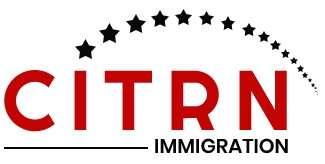
How to come to Canada as a refugee?
How to come to Canada as a refugee?
Canada is known for its strong commitment to protecting human rights and providing asylum to those fleeing persecution and violence. If you are considering seeking refuge in Canada, understanding the process, requirements, and available pathways is essential to ensure that you meet the criteria and successfully navigate the system. This guide will provide a comprehensive overview of the steps involved in coming to Canada as a refugee, from understanding the refugee categories to preparing for a successful claim.
1. Understanding the Concept of Refugee Status
To come to Canada as a refugee, you must meet the definition of a refugee according to international and Canadian law. The United Nations 1951 Convention Relating to the Status of Refugees defines a refugee as someone who is outside their country of nationality or habitual residence and has a well-founded fear of persecution based on one of the following grounds:
- Race
- Religion
- Nationality
- Membership in a particular social group
- Political opinion
Refugees are people who cannot return to their home country due to fear of serious harm. Canada recognizes two main categories of refugees under its immigration and asylum system:
• Convention Refugees: Individuals who have a well-founded fear of persecution based on race, religion, nationality, political opinion, or membership in a particular social group, as outlined in the 1951 Refugee Convention.
• Persons in Need of Protection: Individuals who do not meet the exact definition of a Convention refugee but face a risk of torture, a risk to their life, or a risk of cruel and unusual treatment or punishment if returned to their country of origin.
2. Pathways to Come to Canada as a Refugee
1. Making a Refugee Claim from Outside Canada:
- This is done through the Refugee and Humanitarian Resettlement Program.
- Canada works with the United Nations Refugee Agency (UNHCR) and other designated referral organizations to identify and resettle refugees from overseas.
- Individuals cannot apply directly to Canada for resettlement; they must be referred by the UNHCR or a designated referral organization or be sponsored by a private group in Canada.
2. Making a Refugee Claim from Inside Canada:
- This is done through the Inland Refugee Protection Program.
- If you are already in Canada, you can make a refugee claim at a port of entry (such as an airport, seaport, or land border) or at an office of Immigration, Refugees, and Citizenship Canada (IRCC).
- The Immigration and Refugee Board of Canada (IRB) will assess your claim to determine whether you meet the criteria for refugee status.
3. How to Make a Refugee Claim from Outside Canada
A. Refugee and Humanitarian Resettlement Program
Canada’s Refugee and Humanitarian Resettlement Program is designed for individuals outside of Canada who require protection and resettlement. Here’s how the process works:
Step 1: Obtaining a Referral
- To come to Canada as a refugee under this program, you must first be referred by the UNHCR, a designated referral organization, or be sponsored by a private sponsorship group in Canada.
- The UNHCR or a referral organization will assess your situation and determine if you qualify for resettlement based on the criteria of the 1951 Refugee Convention and Canadian immigration regulations.
- Private sponsorship groups, such as Sponsorship Agreement Holders (SAHs), Groups of Five, or Community Sponsors, can also sponsor refugees. These groups are responsible for providing financial and settlement support to the refugees they sponsor for a specified period, typically one year.
Step 2: Meeting Eligibility and Admissibility Criteria
- To be eligible for resettlement to Canada, you must meet the definition of a Convention refugee or a person in need of protection. Additionally, you must meet Canada’s eligibility and admissibility requirements, including passing medical, security, and criminal checks.
- Canada assesses each applicant on a case-by-case basis, considering factors like the level of risk, the need for protection, and the likelihood of successful resettlement.
Step 3: Submitting Your Application
- Once referred, you will need to complete and submit the required application forms, provide all necessary documentation (such as identification and travel documents), and attend interviews with Canadian immigration officials to assess your claim and eligibility for resettlement.
- During the application process, you may be required to undergo medical exams and provide biometrics (fingerprints and a photograph) to verify your identity.
Step 4: Decision on Your Application
- If your application is approved, you will be granted refugee status and become eligible for resettlement in Canada. The Canadian government will coordinate with international organizations, such as the International Organization for Migration (IOM), to arrange your travel to Canada.
- Once in Canada, government-assisted refugees receive support from the government or private sponsors, including financial assistance, accommodation, healthcare, and settlement services, to help them integrate into Canadian society.
4. How to Make a Refugee Claim from Within Canada
If you are already in Canada or at a port of entry, you can make a refugee claim directly to Canadian authorities. Here’s how the process works:
A. Making a Claim at a Port of Entry
- If you arrive in Canada by air, land, or sea, you can make a refugee claim at a port of entry, such as an airport, seaport, or border crossing.
- At the port of entry, you will meet with an officer from the Canada Border Services Agency (CBSA) or IRCC. The officer will conduct an initial interview to determine your eligibility to make a claim.
- You must provide identification and travel documents, if available, and explain the reasons why you are seeking asylum in Canada.
- If the officer finds you eligible, your claim will be referred to the Immigration and Refugee Board of Canada (IRB) for a hearing.
B. Making a Claim from Inside Canada
- If you are already in Canada, you can make a refugee claim at an IRCC office. You will need to complete the required forms, including the Basis of Claim (BOC) form, which details your reasons for seeking protection and any supporting evidence.
- After submitting your claim, you will receive a notification to attend an interview with an immigration officer, who will assess your eligibility to proceed with the refugee claim.
C. Eligibility Determination
- The IRCC or CBSA officer will determine if you are eligible to make a refugee claim. You may be found ineligible if:
- You have already been recognized as a Convention refugee in another country.
- You have previously made a refugee claim in Canada that was found ineligible.
- You are inadmissible to Canada due to serious criminality, security concerns, or human rights violations.
- You are making a claim at a land border with the United States (subject to the Canada-U.S. Safe Third Country Agreement), unless you qualify for an exception.
- If found eligible, your claim will be referred to the IRB for a full hearing.
D. Preparing for the Refugee Hearing
- The Refugee Protection Division (RPD) of the IRB will schedule a hearing to evaluate your refugee claim. This is a critical step, where you will present your case and provide evidence to support your fear of persecution or risk if returned to your country.
- Prepare for the hearing by gathering all relevant documents, such as identity papers, evidence of persecution (e.g., police reports, medical records, news articles), and witness statements. Work with a lawyer or legal representative who specializes in refugee claims to strengthen your case.
E. Attending the Refugee Hearing
- At the hearing, you will need to present your case before an IRB member. You will be asked to provide testimony, answer questions, and present any supporting evidence. Your lawyer or legal representative can assist you in presenting your case.
- The IRB member will assess the credibility of your claim, your personal circumstances, and the conditions in your country of origin. The decision may be given at the end of the hearing or later in writing.
F. Receiving the Decision
- If the IRB grants you refugee status, you can apply for permanent residence in Canada. This will allow you to live, work, and study in Canada with most of the rights of a Canadian citizen.
- If your claim is denied, you may have the right to appeal to the Refugee Appeal Division (RAD) or seek a judicial review by the Federal Court of Canada, depending on your specific case.
5. Factors to Consider When Applying for Refugee Status in Canada
When seeking asylum in Canada, it is essential to understand the factors that may influence the outcome of your claim:
A. Credibility and Consistency
- Your credibility is crucial in the refugee determination process. Any inconsistencies or discrepancies in your story or evidence can significantly harm your claim. Be honest, clear, and consistent in presenting your case.
B. Supporting Evidence
- Strong evidence is vital to substantiate your claim. This may include documentary evidence, such as medical records, police reports, news articles, or witness statements, that corroborate your fear of persecution.
C. Legal Representation
- Having a lawyer or legal representative can significantly increase your chances of a successful claim. They can help you understand the process, gather evidence, prepare for the hearing, and present your case effectively.
D. Understanding Canada’s Asylum System
- Familiarize yourself with the rules and regulations governing refugee claims in Canada, including the eligibility criteria, documentation requirements, and procedural steps. This knowledge will help you navigate the process more effectively.
Additional Resources
- Immigration, Refugees and Citizenship Canada (IRCC): https://www.canada.ca/en/immigration-refugees-citizenship.html
- Disclaimer: This information is intended as a general overview and does not constitute legal advice. Please consult with a qualified legal professional for personalized guidance on your specific situation.


Looking for safety and a fresh start in Canada?
Explore refugee sponsorship programs and begin your journey to a new life.
Contact us today for support and guidance.

